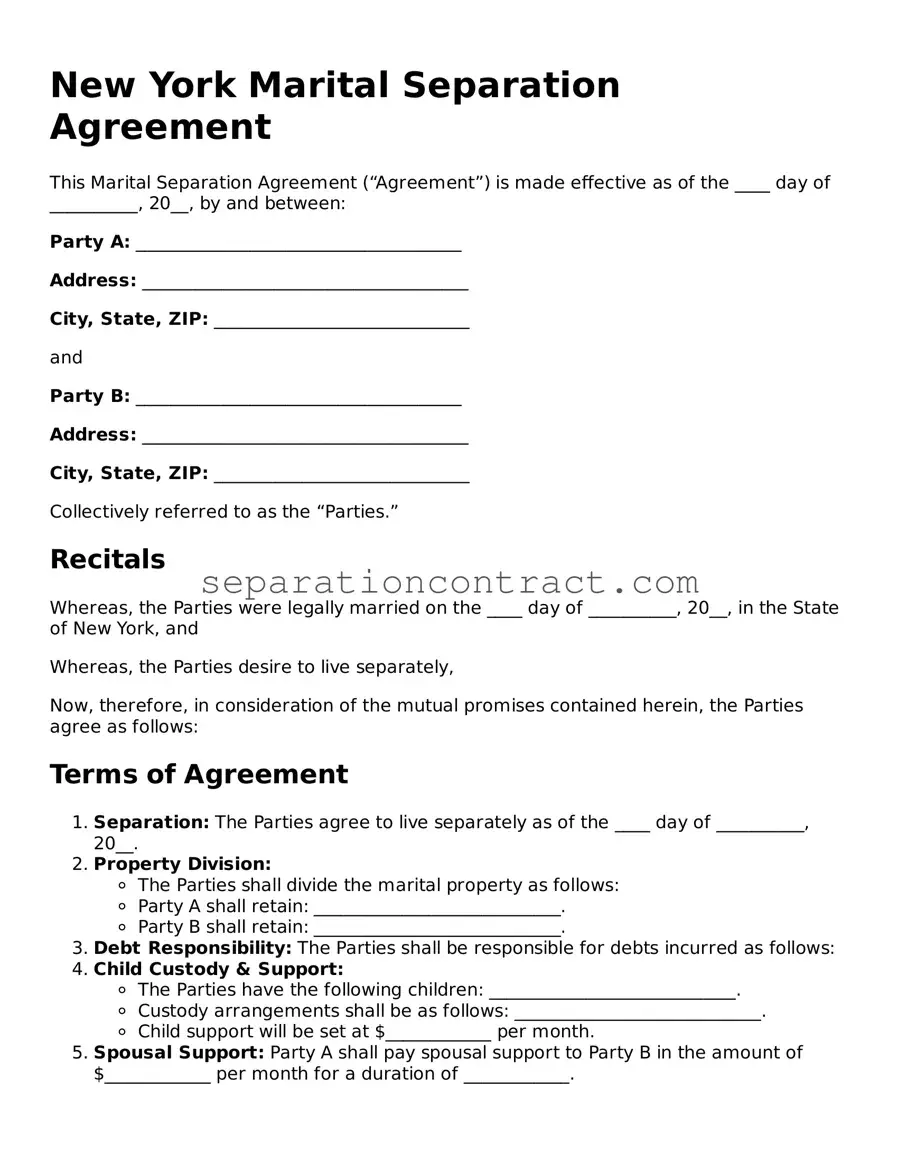Filling out the New York Marital Separation Agreement form can be a complex process. Many individuals make mistakes that can lead to complications down the line. One common error is failing to provide complete and accurate information. Incomplete forms can delay the process and may require additional paperwork.
Another mistake is not understanding the terms of the agreement. It's crucial to read and comprehend each section. Misinterpretation can lead to disagreements later, so take the time to clarify any confusing points before signing.
People often overlook the importance of including all assets and debts. Failing to list everything can result in unfair distributions. Both parties should disclose their financial situations fully to avoid future disputes.
Additionally, some individuals do not consider the implications of child custody and support. These sections require careful thought and negotiation. Ignoring these aspects can lead to conflicts that affect the well-being of children involved.
Another frequent mistake is not having the agreement reviewed by a legal professional. While it may seem like an unnecessary expense, having an expert look over the document can help identify potential issues and ensure that the agreement is enforceable.
People sometimes forget to include a dispute resolution clause. This clause can provide a clear path for resolving disagreements in the future, saving both parties time and stress.
Some individuals also fail to keep copies of the signed agreement. It’s essential to retain a copy for personal records and to share with relevant parties. Losing the document can complicate matters if questions arise later.
Lastly, many make the mistake of not discussing the agreement thoroughly with their spouse. Open communication can prevent misunderstandings and foster a more amicable separation process. Working together can lead to a more satisfactory outcome for both parties.
